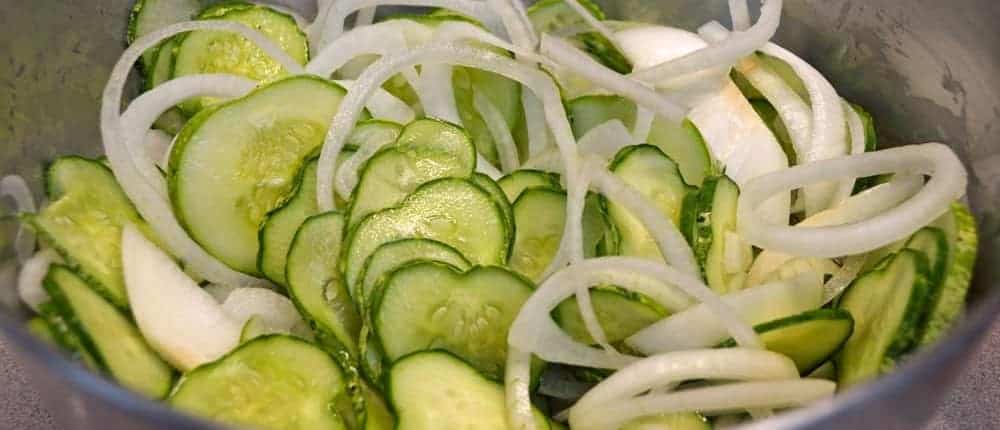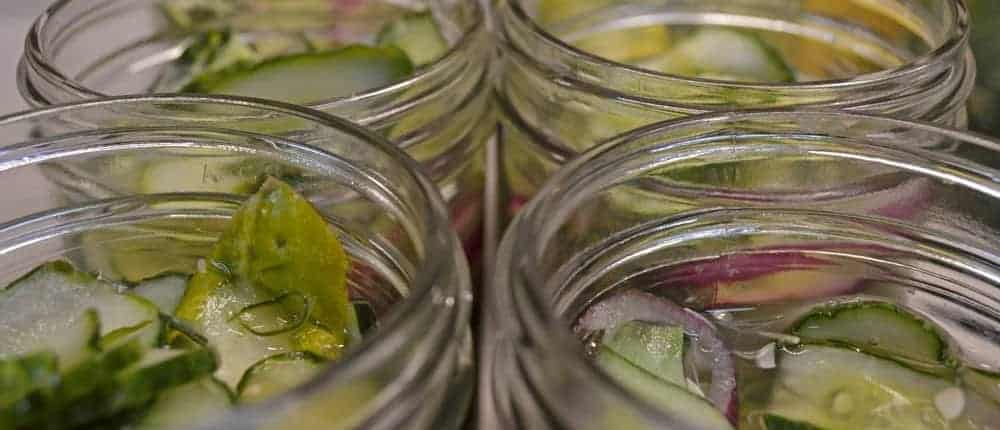Elevate your coleslaw game with Chipotle-Cilantro Coleslaw. This recipe features roasted golden beets for a unique and delicious twist.
Tag Archive for: Cilantro/Coriander
Spiced cauliflower soup is an easy and delicious dish – a warming winter’s dinner but is also a cool and creamy summer’s lunch entreé or appetizer. I had a smoked and roasted potato from roasting a chicken in the wood fired clay BBQ, so that added an extra dimension to the flavors.
The flavors are very engaging with more depth than would be anticipated from such simple ingredients. Use the coconut cream for a milder, richer and creamy soup, with the yogurt adding a tangy counterpoint.
Here’s what you could grow in your garden for this recipe –
- 1 large potato diced
- 1 medium cauliflower head chopped
- 1 medium onion chopped
- 1 tbsp oil
- 3 cloves garlic finely diced or crushed
- 1 tbsp grated fresh root ginger
- 2 tsp ground turmeric
- 1 tsp cumin seeds
- 1 tsp black mustard seeds
- 2 tsp ground coriander
- 4 cups vegetable stock
- 1 1/2 cups coconut cream or yogurt
- salt and freshly ground black pepper to taste
- fresh cilantro or parsley to garnish
- Add potato, onion and cauliflower to a large heavy bottomed pot or deep saucepan with the oil and 1/4 cup water. Heat until bubbling then cover and lower heat to simmer for about 10 minutes.
- Add the garlic, ginger and spices. Cook for 2 minutes, stirring occasionally, then add stock, salt and black pepper.
- Increase heat and bring to just before a boil, then lower heat and simmer for about 20 minutes.
- Stir in coconut cream or yogurt, taste and adjust salt and black pepper and serve with a generous pinch of freshly chopped cilantro or parsley.
Makes excellent and super easy leftovers for the following day's lunch. It is surprisingly satisfying on a cold winter night, but is light and cool on a summer's day.
This is extremely easy to make and doesn’t need you to watch or stir it the entire time, freeing you up for other things for most of the cooking time.
Starting with the main ingredients, I chopped them into appropriate sized pieces. I left the skin on the potato for the extra smoky flavor, but also because lots of nutrients are in the skin that I didn’t want to lose. Same thing with the ginger, I just thinly sliced it and then diced it finely so that it would cook down into the texture of the soup.
The cooked vegetables after adding the spices but just before adding the vegetable stock. Turmeric is highly beneficial to health, especially when activated by ground black pepper and teamed up with a healthy fat like coconut oil. Much more of the nutrients and benefits are delivered to the body this way, so this soup is the perfect, delicious delivery method!
Ready for enjoyment! The potato cooks down, thickening the consistency and the cauliflower almost completely cooks into the soup. If you want, transfer the finished soup to a blender for a quick spin to make it smoother before serving. The fresh chopped cilantro adds a bright, lively note!
Pickled jalapeños and garlic have been favorites of ours for a couple of decades. Long enough that we don’t remember exactly when we first started liking them, or where we came across them, but we just know we’ve enjoyed making them for a really long time! Our original recipe was on a well-worn scrap of newspaper clipping and made a lightly sweet Polish brine with garlic and we added the jalapeños after trying the plain garlic.
The Joy of Pickling recently made its way into our lives and we discovered this variation on the theme – using honey instead of sugar for the sweetness and adding an unusual spice mixture to kick things up a notch. We think this is fabulous!
If you are not a pickled garlic lover; or a pickled jalapeño aficionado this might take a little getting used to, but trust us it is delicious and well worth trying. The vast majority of people that we’ve sampled this to have loved it, even if they aren’t all that into chunks of garlic and hot peppers. The pickling mellows the heat and punch from the garlic and jalapeños, while the light sweetness brings some nice counter balance to the boldness. The spices bring traditional pickle background flavors into the mix, leaving most with a look of intrigue on their faces after tasting them.
We love these served on a multi-grain cracker, a whole clove and jalapeño ring side by side. Sometimes a thin slice of aged Irish cheddar cheese mixes things up.
Here’s what could come out of your garden for this recipe – Jalapeños, Coriander and Garlic!
- Whole black peppercorns
- 3 lbs fresh garlic cloves
- 5 lbs fresh jalapeños cut into rings and de-seeded - red, green or a mix of colors
- 3 quarts cider vinegar
- 1/2 cup honey
- 2 tbs pickling salt - kosher salt works well
- 1/2 cup Mixed Pickling Spices
- 1 four inch cinnamon stick broken into small pieces
- 4 whole bay leaves torn into small pieces
- 1 tbs whole yellow mustard seeds
- 1 tbs whole allspice berries
- 2 tsp whole cloves
- 2 tsp whole coriander seeds
- Add 1/4 tsp whole black peppercorns to each pint jar.
- Add 1/2 to 3/4 cup garlic cloves to each jar, depending on how much garlic you want.
- Add enough water to water bath canning pot to submerse the pint jars and heat to a boil.
- Add the vinegar, honey and salt to a non-reactive saucepan or pot (stainless works well) and bring to a boil.
- Tie the Mixed Pickling Spices into a spice bag or square of cheesecloth. Add to the pot with the vinegar, honey and salt to steep.
- Once the pickling solution and spices are at a boil, add the jalapeño rings and bring to a simmer. Reduce heat to keep at a simmer for 2 minutes.
- Remove spice bag and divide jalapeño rings evenly among pint jars.
- Add hot pickling solution to each jar, leaving about 1/2 inch headspace. Close jars with two piece canning rings and new lids.
- Process the jars in the boiling hot water bath for 10 minutes, making sure there is space between each jar for hot water to circulate.
- After 10 minutes, remove and allow to cool down, listening for the "pop" of the canning lids sealing. Double check once cool to make sure all the lids sealed.
- Store the jars in a cool, dry and preferably dark place for 3 weeks for the pickling process to finish. After opening jars, store in refrigerator and use within 2 weeks of opening.
Once people taste these, they will go fast so don't hesitate to make a large batch!
We start with fresh jalapeños and garlic cloves. If you don’t know how to peel lots of garlic very quickly and easily – just watch our short video “Peel Garlic in 10 Seconds“ and you’ll be set!
Next is to mix up the Mixed Pickling Spices for some great background flavors to round things out.
The whole spices are enclosed in a spice bag…
…and added to the pickling solution that is heating up to a boil.
Once the solution is at a boil, the jalapeños are added…
…and brought back to a simmer for a couple of minutes.
The hot peppers are poured over the waiting garlic in the pint jars.
The jars are waiting to be topped up with hot brine.
Ready for the hot water bath canning!
After canning, the jars need to pickle for about 3 – 4 weeks for the magic to happen, then it’s time to enjoy!
Ellen shares her research on the history of beets today. Did you know that beets weren’t always the deep red we are familiar with, but that characteristic was selected for and bred into them in the 1700’s? Lighter red existed much earlier than that, but not in the blood-red shades we know today.
Make sure to visit our Beet department and grow your own tasty varieties! Don’t forget to try both recipes at the end of today’s article.
Beet (Beta vulgaris)
The beet as we know it today is a handsome vegetable. It is rooted in the ground, transferring the earthy taste of good soil through its deep red root. The beet is an old vegetable, ascribed with aphrodesiac and blood strengthening qualities. Its wild ancestor, the sea beet (Beta vulgaris sp. Maratima) is not a sweet vegetable–it is a bunched mass of greens with a slender white-yellow root that grows almost on the tide line of the ocean.
The beet as we know it today has a larger, fleshier, and darker colored root than the seabeet. The seabeet grows wild along the Mediterranean coast, down the coast of the Corsican sea. The sea beet has the heart-shaped leaves, deep glossy green color, and bunching tendencies of garden beets. Today, we almost equivocally think of beetroot, as it is commonly called in Britian, New Zealand, and Australia, as blood-red. In fact, red pigmentation was selected and bred into the beet in the mid 18th century. While white colored beets are not common in the public marketplace, they are the leading beet grown for sugar production.
Another common cultivar of beta vulgaris is Swiss chard, whose name comes from a bastardization of the Sicula–the leafy green that Swiss chard is most likely descended from. Swiss chard is grown for its large leaves, which offer a near year-round source of leafy greens–with white, red, or rainbow colored ribs. Beet greens taste remarkably similar to chard and in fact the beet is the same as Swiss chard, but it has been bred to produce large edible roots, rather than put that energy into leaf production.
Anyone who has tasted a fresh beet can attest to its earthy, mineral taste. For those who find red beets to be too intense, the yellow or lighter fleshed cultivars offer a good substitute. More mellow tasting varieties include Golden Detroit and Chioggia beets. Chard’s buttery texture and almost ‘healthy’ taste is unbeatable, and I almost always feel better for eating it.
The sweetness of beets is well known. The vegetable has been associated in many cultures with love; it is said if a man and a woman eat from the same beet, they will fall in love. Aphrodisiac qualities were well-known in the beet in Ancient Greece and in Roman times. The red beet was hung on the walls of prostitution houses in 740 AD and again in the early 20th century. The beet is an old symbol of love and lust–and wealth. In Delphi, a beet was said to be worth its weight in silver, and was offered to Apollo to ensure wealth.
Today, the beet is well known and loved by gardeners and small growers. Its color and sweet taste are a welcome mix to the bitter greens and other green vegetables that are available in the spring months. Traditionally, there were three kinds of beets in cultivation. The sugar beet is used to produce sugar and was developed in Upper Silesia (now Poland) in the 1740’s. The majority of Europe’s sugar at the time was coming to the continent via the British colonies in the Caribbean. The sugar beet became better known when Napoleon Bonaparte announced an embargo with the British in 1813 and endorsed the growing and processing of sugar beets.
The process of extracting sugar from beets continues today in America and Europe, with Russia producing 1/6th of the world’s sugar beets. They are commercially grown all over the United States, concentrated in the Midwest and into Washington and Colorado States. Today, 20-30% of the world’s sugar comes from the sugar beet. As in Napoleons time, the United States sugar beet industry grew immensely after we enforced an embargo with Cuba, which was the major source of sugar for the United States.
The second type of beet is a forage beet, or manglewertzle, which simply means “root beet”. They are grown as livestock feed and are either left in the ground for sheep or other animals to uproot or grown, harvested, and fed out during the winter months. These varieties of beet have quickly lost popularity and are the most genetically threatened. One well-known Pennsylvania revival is Deacon Dan’s, which William Woys Weaver calls, “the field pumpkins of the beet world…some can weigh as much as 15 pounds but they need good, sandy soil to develop such large size.”
The most well known beets are those of the garden. They are typically red, although if you look closely, there are many shades of red, pink, even yellow to be found in garden beets today. They come in a variety of shapes, from perfectly spherical to flattened on the bottom half, to cylindrical. The garden beet is used for pickling, canning, eating fresh, roasted, and really, however you can think to enjoy them!
For some, the beet releases memories of vinegary pickles, or generic canned red vegetable, or the inevitable stained fingers one gets when preparing cooked beets. Beets food uses extend into food coloring, dyes, and even making tomato sauces more red. Nothing beats a fresh beet! Beets are served many ways, from shredded raw into a salad, roasted, or made into a soup. Borscht is a traditional soup from Ukraine–it is said there are as many recipes for borscht as there are villages throughout Eastern Europe. I enjoy this delightfully colored soup all year long, served chilled or hot. If borscht is not your thing, try the roasted beet salad with feta and cilantro.
Here’s what could come out of your garden for this recipe – Beets, Onion, Carrots, Cabbage and Dill!
Here’s what could come out of your garden for this recipe – Beets and Cilantro!Traditional BorschtBorscht is a traditional Eastern European soup that is served either hot or cold. There are many different variations, but this is a good starting point.Servings: 4Ingredients
- 2 large or 3 medium beets thoroughly washed
- 2 large or 3 medium potatoes sliced into bite-sized pieces
- 4 Tbsp of cooking oil
- 1 medium onion finely chopped
- 2 carrots grated
- 1/2 head of cabbage thinly chopped
- 1 can kidney beans with their juice
- 2 bay leaves
- 10 cups water and 6 cups broth to get 16 cups liquid total
- 5 Tbsp ketchup
- 4 Tbsp lemon juice
Instructions
Serve with a dollop of sour cream if serving hot. To serve chilled, simply make a day in advance and refrigerate. Take out about 15 minutes to a half hour before serving so the flavors will be noticeable.
Serves 4 as a meal, or 6 as an introductory courseRoasted Beet SaladThe richness of the roasted beets are offset and enhanced by the tang of the cheese and hint of apple cider vinegar.Servings: 4Ingredients
- 1-2 lbs beets red and yellow make a beautiful salad, but one or the other will do
- Feta or soft goat cheese
- Olive oil
- Apple cider vinegar
- Salt and pepper
- 1/2 bunch cilantro
Instructions
Serves 4 as a side salad.
A Cucamelon is a tiny watermelon lookalike originally from Central America that is enjoying its spot in the limelight. Home gardeners are captivated by the look of these jewel-like melons and then often fall completely in love with their crisp, crunchy, cucumber-tinged-with-lime flavor.
After you’ve gotten your fill of fresh cucamelon in salads, salsas, appetizers in bowls of assorted olives, and as garnishes for high-brow Martinis, save some for the winter months with this delightful pickled cucamelon recipe!
Here’s what could come out of your garden for this recipe – Dill, Coriander and of course Cucamelon!
- 1 1/2 cups white vinegar - distilled malt or white wine
- 1 tsp salt
- 4 tbsp raw sugar
- 1 tbsp chopped fresh dill
- 1 tbsp chopped fresh mint
- 1 tsp coriander seeds
- 9 oz fresh cucamelons
- 1 fresh grape leaf or oak leaf
- Pour the vinegar into a bowl and add salt and sugar, then whisk until they have completely dissolved. Stir in the dill, mint and coriander seeds.
- Wash the cucamelons in water and pour into a sterilized jar. (Run the jars through the dishwasher and dry in a warm oven set to its lowest temperature.)
- Scrunch up the grape or oak leaf and place it on top of the cucamelons. The tannins in the leaf will slowly disperse outwards and help keep the fruit crisp.
- Pour the seasoned vinegar into the jar and seal tightly.
- Refrigerate for 2 weeks. The cucamelons will be pickled and ready to eat. Once opened, store in the refrigerator. They will keep up to 3 months, but most likely won't last nearly that long!
- Yields about 1 quart.
Pick enough cucamelons to make several jars of pickles, as you will go through one jar very quickly once people get a taste of them!
Makes a most impressive and unusual gift, especially once the weather is cold. Your recipient will remember this gift for a long time!
Adapted from Homegrown Revolution
Pechugas in Salsa de Poblano Gratinadas
This Mexican poblano chicken dish from the Oaxacan region is another one of our family’s favorite dishes, partially because it is easy to make, is absolutely delicious and makes fantastic leftovers for lunch the next day or so. The flavors combine the mild richness of the roasted poblano chiles with the smooth creaminess of the cream and cheese in typical Oaxacan style. Add into this the smoky, roasted and seasoned chicken and you’ve got a memorable dish! We usually serve this on a bed of Mexican rice with a salad on the side. It never fails to impress our guests, with most asking for the recipe or for a second serving.
You can make this ahead of time, either in stages or in full to be served when it is convenient for your schedule. The sauce can be made up to 2 days ahead of time and the chicken can be roasted the day before, so all that is needed is to add the sauce to the chicken and pop it in the oven for 30 minutes or until everything is hot. This is best when roasted on the grill outside for that incomparable smoky flavor, but is very good when done entirely inside with the chicken browned in a heavy bottomed pot first.
Oaxacan Chicken in Poblano Sauce
Ingredients
1 lb. chicken parts cut up – can use breasts or thighs
3 – 5 large poblano chiles
1 large onion, diced
2 cloves garlic, diced
1 1/2 cup half and half
1/4 lb. grated Monterey Jack cheese
Freshly ground salt and pepper
Seasoning for the chicken
1 Tbs. ground cumin
2 Tsp. ground coriander
1 Tsp. garlic powder
1 Tbs. dried Mexican oregano, crushed
1 Tsp. freshly ground pepper
1 Tsp. sea salt
Mix the chicken seasonings well and then sprinkle onto chicken pieces, covering moderately. Grill on a medium heat for 5 – 7 minutes a side, to cook about 1/2 way or more. Remove from grill.
Grill onion and poblano peppers for 7 Р10 minutes or until starting to soften. Remove from grill and remove the stem, seeds and membranes from the peppers, then dice into medium sized pieces. Alternately, saut̩ in a heavy bottomed pot for 7 -10 minutes after cutting up peppers.
Puree pepper and onion mixture in a blender with half and half. The texture can be smooth or slightly chunky, depending on your preference. Pour poblano sauce into a heavy pot, and then add chicken pieces one at a time, coating them well with the sauce.
Either bake in preheated oven at 350F for 20 – 25 minutes or until sauce is bubbly, or simmer on stovetop. Once sauce is bubbling, turn off heat and add grated cheese. Let sit for 3 – 5 minutes to melt cheese, then serve hot.
Serves 4 – 6
We did a photo essay for you to see how easy it is!
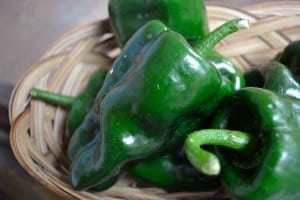 Starting with fresh Poblano peppers, we roasted them for a few minutes to soften them up, then removed the seeds, stems and membranes.
Starting with fresh Poblano peppers, we roasted them for a few minutes to soften them up, then removed the seeds, stems and membranes.
 Then we sauteed them for a few minutes to mingle their flavors.
Then we sauteed them for a few minutes to mingle their flavors.
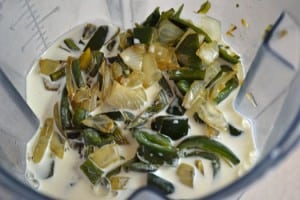 After they were ready, they went into the blender with some half and half and were pureed to a chunky texture. You can make it as smooth or chunky as you like.
After they were ready, they went into the blender with some half and half and were pureed to a chunky texture. You can make it as smooth or chunky as you like.
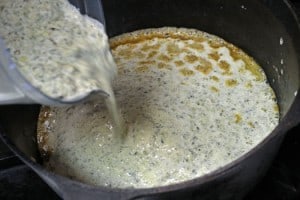 The poblano sauce was added back to the pot…
The poblano sauce was added back to the pot…
 Then the roasted chicken pieces were ready to be added.
Then the roasted chicken pieces were ready to be added.
 After adding the chicken pieces, the sauce was simmered for about 20 minutes until it was hot and bubbly, then the Monterey Jack cheese was added and melted with the heat off.
After adding the chicken pieces, the sauce was simmered for about 20 minutes until it was hot and bubbly, then the Monterey Jack cheese was added and melted with the heat off.
 Served on a bed of Mexican rice, it was both beautiful and delicious!
Served on a bed of Mexican rice, it was both beautiful and delicious!
This is an incredibly versatile chile sauce with loads of flavor and just a touch of heat. It is my adaptation of the incomparable Mole Coloradito Oaxaqueno from Susanna Trilling in her “Seasons of My Heart” cookbook that we’ve featured before. (Mole is pronounced “Mole-lay”!)
This makes a sauce that is 95% of her Mole, but I prefer to make a very large batch as it is a project to do and doubling of the recipe doesn’t take much more time to make. Then you have this cache of amazing flavor that spices up any dish with no extra time but lets all of the flavor and work shine through. It is a wonderful basis for enchiladas, nachos, stews, soups, sloppy Joe’s, burritos or even spooned over eggs in the morning. I like to add about half tomato sauce by volume to make a great sauce that is smooth and mellow with the taste of the chiles but none of the bite.
Colorado means “red” in Spanish, usually referring to a deep brick type of red, so coloradito is “little red”. We’ll give you the recipe first, then walk you though the preparation in photos so you can see the stages and progression. These chiles can easily be grown in your garden for most of North America, or at a well-stocked Mexican grocer. For the Mexican chocolate, Ibarra is a well-known brand that is available almost everywhere. If you really want to take the flavor to the next level, look at Taza Chocolate. It is stone ground in the traditional Mexican village tradition and has a flavor that is absolutely to die for, not to mention being fair trade and traceable to the source. You can see all about how your batch was made by entering the batch number into their website!
Homemade Chile Coloradito Sauce
- 18 Ancho chiles
- 21 Guajillo chiles
- 25 Pasilla Bajio/Chilaca chiles
- 10 Concho chiles
- 1 Chipotle chile en adobo
- 5 Black peppercorns, whole
- 2 Cloves, whole
- 1 Star anise, whole
- 1 Allspice, whole
- 1 Piece Mexican cinnamon, about 1 inch long
- 1/2 Tsp Cumin, whole
- 1/4 Tsp Coriander, whole
- 1 Head garlic, cloves separated
- 1 Medium onion
- 1 Lb ripe tomatoes, quartered
- 1/2 Tsp Mexican oregano, dried (Can substitute Marjoram if needed)
- 1 Plantain, ripe
- 1 Tbs raisins
- 5 Almonds, whole and unpeeled
- 1/2 Cup sesame seeds
- 2 Bars Mexican chocolate – 6 oz total
- 3 Tbs Coconut oil or sunflower oil
- 1 1/2 Qt homemade chicken stock
- Salt to taste
There are 3 steps to this recipe: processing the chiles, processing the spices and processing the tomatoes, onions, plantains and seasonings.
Some cooks will stem and seed the chiles while still dry, toasting the pieces. Others will toast the chiles whole, then soak them to soften the skins and remove the stems and seeds.
- Bring 2 quarts of water to a boil. Meanwhile, heat a dry comal, griddle or a cast-iron frying pan over low heat and toast the chiles on both sides for about 5 minutes. Toast the Anchos a bit slower and on a lower heat because of their thicker skins. Toasting them blisters and loosens the skins and gives off a rich chile aroma. It may be best to toast them in smaller batches so the pan or comal is not crowded. You need room to move and turn the chiles in the pan.
- Remove the chiles, place them in a large bowl with the hot water. Cover or weight the bowl with a plate to keep the chiles submerged. Soak for about 20 minutes to fully soften the dried skins. If chiles have been stemmed and seeded, puree in a blender using as little of the chile water as possible to make a thick paste, usually about a cup. If chiles have not been stemmed and seeded, do this first, then puree in blender. It is best to do this in small batches to not overload and overheat the blender, as the chile puree is quite thick. Depending on your blender, you may have a smooth paste at this point, or you may have some small pieces of skin. If skin pieces are present, pass the puree through a food mill or sieve to remove the skin pieces. Set aside.
- After processing the chiles, heat the dry comal, griddle or cast-iron frying pan over medium heat and toast the peppercorns, cloves, allspice, cinnamon stick, cumin and coriander until they release their aroma. Stir the spices constantly to prevent burning and to monitor the toasting process. Set the spices aside.
- Grill the garlic and onion on the dry frying pan, turning often until they become translucent. They may stick a bit, but keep turning. Puree the spices, onion and garlic with 1/2 cup of the chicken stock. Set aside.
- Heat the cast-iron frying pan to medium and cook the tomatoes and oregano with no oil until the condense, usually about 10 – 15 minutes. They will give off their juices, then start to condense as the juices evaporate. Once condensed, set aside.
- Heat 2 Tbs of the oil over a medium heat in a cast-iron frypan and fry the plantain until brown, about 10 – 12 minutes. Remove from the pan, add raisins and fry until plump, about 3 minutes. Remove and set aside with plantain. Fry the almonds until light brown, about 4 minutes. If needed add a little additional oil, but the amount should decrease with each ingredient until the almonds are almost being dry-fried.
- Puree the plantain, raisins and almonds in a blender with 1 1/2 cups chicken stock until smooth.
- Heat frying pan over low heat, add 1 Tsp of oil and gently fry the sesame seeds until just turning brown, about 6 – 8 minutes, stirring constantly. Remove, cool and grind in a spice grinder or food processor.
- In a heavy stockpot, at least 6 quart capacity, heat 1 Tsp of oil until almost smoking on medium-high heat. Add chile puree and cook, stirring constantly. It will splatter, but keep stirring until heated through. Once heated, lower heat to medium-low and cook for about 20 minutes, stirring frequently. When chile puree starts to thicken add tomato mixture, lower heat to low and cook another 15 minutes, stirring to keep from sticking or burning. Then add onion and spice mixture and stir well. Add pureed plantain and sesame mixture and stir well. Cook a further 10 minutes, stirring constantly to keep from sticking.
- If you are making a larger batch and freezing some, add 2 cups of chicken stock, stir in well then add the chocolate and stir constantly. Once the chocolate has dissolved, add the salt, stir in well. Reduce heat to a slow simmer and let cook for 10 – 15 minutes, stirring frequently to avoid sticking. It will be a thick sauce, ready for freezing in jars. Let cool, then ladle into mason jars leaving an inch gap at the top. Will keep in the freezer for up to a year.
- If you are making the batch to use fresh, add 5 cups of chicken stock to thin the sauce, then add the chocolate, stirring constantly. Once the chocolate has dissolved, add the salt. Lower the heat to a slow simmer and let it cook down for at least 30 minutes, stirring occasionally. It should coat the back of a spoon, but not be much thicker when done.
Makes about 8 servings.
Recipe Tip! It doesn’t take much longer to make double the recipe and freeze for an easy, delicious dish later!
This may sound complicated or a lot of work, so we will walk you through the process and show you what each step looks like. It is a good day’s worth of work, but it can be broken up into a couple of days if you don’t have the time to make it all in one day. Once you taste the results, you will immediately see why it is worth the effort to make a large batch!
In the first photo, we are toasting two of the different chiles and dry frying the onion and garlic in another pan. We have learned to save a lot of time by combining a couple of steps at once. The Ancho chiles are in the back with the Pasilla Bajio or Chilacas in front.
These are the chiles after toasting, soaking and being stemmed and seeded. Most of the work happens right here, to get to this stage. After this everything is roasting and toasting, then using a blender to puree everything into a sauce. To give a sense of scale, this bowl is over 18 inches across!
Into the blender with the chiles! We have a Vita-Mix blender that is a real blessing with big projects like this. It stands up to the thick sauce without overheating, but we still need to process all of the chiles in batches. We usually fill the blender about 1/3 full with chiles and add just enough soaking water to make a thick paste. Please notice the gloves, I use them when working with chiles for extended periods of time to keep me from itching my eyes with a chile-infused finger!
It is easy to see why the name of “colorado” is applied to this sauce – look at that beautiful rich brick red color! My mouth was watering for most of the time after we pureed the chiles as the kitchen was filled with their aroma.
There is not too much volume lost from the soaking stage to the pureed stage. This is the same bowl after we’ve finished pureeing all of the chiles.
Next up is toasting and grinding the spices and seasonings. We used a smaller cast-iron pan to toast the spices and release their aromas.
A molcajete is what we use simply because we have one. It is great for grinding spices and really working them to release their flavors and aromas. A food processor or blender can do much the same with less effort.
A few minutes later, here is what the ground spices look like, ready to be mixed into the chile mixture. At this point we’ve also pureed the onion and garlic and mixed it into the chile sauce.
Now it’s time to mix it all together! This photo helps to show the scale of everything, as the whisk is almost a foot long and I’ve got my hand completely wrapped around it to work all of the purees and spices together.
After everything is mixed together and cooked at a slow simmer, we put it up in jars to freeze for later. We use pints, as this gives a generous amount of sauce without being too much after a couple of days. We leave about an inch or little more of space at the top to allow for expansion in the freezer.
All done except the clean-up! This particular batch made 17 pints of scrumptious chile sauce, with just a bit left over for the next morning’s eggs. This will give us almost a year’s worth of chile sauce.
A close-up of the color and texture of the finished product. Well worth the work!
I grew up eating this green chile stew, or as we simply called it – green chile. Mention green chile in most places in the Southwest, and people will understand that you are talking about a bowl of stew, made with green chiles, herbs, sesonings and usually pork. We would make a huge batch of it in the fall, roasting, peeling, seeding and chopping upwards of 50 pounds of the Hatch New Mexican green chiles on the first day. The next day we would make the recipe in huge kettles on the stove to serve at Thanksgiving, Christmas and celebrations at the end of the year. What we didn’t eat immediately we would freeze for the coming year. Thanksgiving just wasn’t really complete without a bowl of green chile on the table, to be ladled over the turkey, mashed potatoes or in a bowl on the side to be savored all by itself. Christmas was much the same. That green chile was something to be looked forward to each time we took it out of the freezer for that night’s dinner.
We learned the foundation of this recipe from an old family friend from a small town in the state of Chihuahua in Northern Mexico. She grew up poor, so her family grew and raised almost all of their own food, including chiles that were used in almost all of their cooking. The flour and oil is used to make a roux, or thickening sauce that gives the dish a nutty flavor as a backdrop for the chiles and meat to take center stage. It takes a bit of time to make, so make a lot to freeze for later. It doesn’t take any extra time to make more, especially if you aren’t roasting, peeling, seeding and chopping the chiles yourself. You can order them directly from companies such as Biad Chile Company and get them delivered to your door, or go to your local farmer’s market where there will probably be a propane powered chile roaster spinning away, creating fresh roasted chiles right before your eyes.
This recipe will give you highly tasty, mild green chile. You can spice it up with hotter green chiles, or with some varieties of hot red chiles as you like. Green chile is ubiquitous in the Southwest, every family has their own take or twist on the basics, so no two are alike. In Santa Fe, you can go from one restaurant to another directly across the street and the tastes will be noticeably different, but delicious.
Here’s where the story takes a little jag. Last year we raised Navajo Churro sheep for the first time. After we got them back in little white packages, we tried them in this recipe, as we had run out of pork. It turned out to be one the best tasting green chiles that I had ever eaten. The Churro has just the right flavoring that pairs beautifully with the chiles to make an outstanding dish. Home or locally raised pork is also excellent, as it has much more flavor than commercially raised supermarket pork.
Serve with a garnish of chopped cilantro and a swirl of sour cream if you want to dress it up a bit. Warm tortillas are a great accompaniment. Give it a try and let us know what you think!
Old Time Green Chile Stew
- 1/2 cup flour
- 1/2 cup oil – olive, coconut or vegetable
- 2 – 3 medium onions, chopped
- 4 – 6 cups water
- 2 – 3 lbs Navajo churro lamb or home raised pork cut into bite sized pieces
- 5 lbs Hatch mild green chiles, roasted, peeled and diced
- 2 heads of garlic, peeled and sliced
- 1 Tbs fresh ground black pepper
- 2 Tsp salt
- 1 Tbs whole cumin seed, roasted and freshly ground
- 1 Tsp whole coriander seed, roasted and freshly ground
- 1 Tbs Mexican oregano, lightly toasted and freshly ground
- 1 Lb fresh tomatoes or 1 16 oz can of chopped tomatoes (optional)
- 2 – 3 medium potatoes, diced (optional)
- Before starting, have onions, lamb/pork, green chiles and 2 cups water prepared and ready at hand.
- In a heavy stock pot, preferably cast iron, heat oil over medium heat. When oil is warm, add flour and brown to make a roux. Stir constantly with a spatula, reaching all parts of the bottom of the pan to keep flour from burning. The mixture will bubble and foam as it starts to brown, then settle into a smooth consistency. The color will change from white to an old copper penny color and the odor will go from flour and oil to a roasted aroma. Be careful not to burn the flour, as you will need to start over. If in doubt, stop browning at a slightly lighter color.
- To stop the browning process, add the onions and 2 cups water. It will hiss and steam as you add them, stir mixture well to cool roux and brown the onions. When onions have started to brown, add lamb/pork and brown.
- Add chiles and remainder of water, stirring well. While chiles start to simmer, roast cumin and coriander in small skillet over medium heat until they release their toasted aroma and add Mexican oregano at end to lightly toast. Grind them in mortar and pestle or food processer.
- Add herb mixture to chiles, along with garlic, salt and black pepper.
- Stir mixture well, reduce heat to a low simmer and check on every half hour or so until meat is tender and flavor has mingled well.
- If desired, tomatoes and potatoes can be added at start of simmering for a different flavor profile.
Makes plenty for a large dinner and enough to freeze 6 – 8 quarts.
Recipe Tip! This is a very mild “heat” with great flavor, but can be modified by using hotter chiles to suit your spice tolerance.
Here’s a recipe that will take a little preparation, but you will be thanking me for it later! Make a lot more of these dried tomatoes than you think that you will ever need, as once folks catch on to just how incredibly tasty these little jewels are, you will run out. You might want to hide some just for yourself!
These make beautifully presented, incredibly thoughtful gifts for the chef or serious home cook in your life. You cannot buy the flavor of these herbed tomatoes, anywhere, at any price. These will take a bit of time, but doesn’t require much hands-on time to make.
First, the tomatoes. Only heirloom tomatoes can really be considered, as the flavor is what you are after. The beauty of this process is that almost any tomato can be used, as the drying intensifies the flavors already present. Obviously, a paste tomato will give you a more substantial result. Good ones to look for are the plum and pear sizes with meaty walls, few seeds and a ton of flavor. If you don’t have these already growing in your garden, plan to plant some next year and look at your local farmer’s market. You will need a lot of fresh tomatoes, as they lose a lot of weight during drying. Plan on about 3 times the fresh volume as what you will get dried.
Drying them is the easy part. Wash them, slice and place on cookie sheets to dry. The oven is a great choice, as most gas fired ovens with a pilot light stay at around 90F or so. A consistently warm, sunny location is also good. If drying outside, cover with cheesecloth to prevent flies from snacking on your treats. Let them dry to a leather-like stage, then collect and start the marinating.
There are several different directions you can go with the herbs. A traditional approach is to use basil, oregano and garlic. A French approach would include lavender buds, Herbes de Provence with garlic. The strong punch of Mexican oregano accompanied by some smoked Jalapeno chiles, cumin and marjoram would be out of this world as well. Be creative, look at some herb combinations you enjoy and do some experimenting. The results will most likely be quite tasty!
We will start with the most basic recipe and then give you some alternatives to try. Use as you would sun-dried tomatoes – in soups, sauces, stews, bruschetta, pizza, spreads, salads or anywhere else the flavors would work well.
Herb Marinated Dried Tomatoes
- 1 1/2 Cups dried tomatoes
- 1 Tbs fresh basil leaves, chopped
- 2 Tsp fresh oregano, chopped
- 1/4 Tsp pickling salt
- 2 Large garlic cloves, thinly sliced
- 6 Tbs red wine vinegar
- 2 Tbs Extra virgin olive oil
- If tomatoes are crispy dry, put into 2 cups boiling water for 5 minutes to soften, then drain. If tomatoes are leather dry and still slightly pliable, you don’t need to soften them.
- Add herbs, salt and vinegar to bowl and mix or toss well. You want to have all of the herbs well mixed before adding the tomatoes.
- Pack tomatoes and herb mixture into a 12 ounce to 1 pint jar, being sure to coat the tomatoes well with the herb mixture. Leave a small space at top of jar. Add olive oil to top and cap jar.
- Store in a cool, dry, dark place. Once opened and for longer storage, keep in refrigerator.
Use these following recipes as the herb ingredients for the basic recipe above.
Herbes de Provence Marinated Dried Tomatoes
- 2 – 3 Tbs Herbes de Provence
- 3 Large cloves garlic, thinly sliced
- 1 Tsp freshly ground black pepper
Mexican Herbed Marinated Dried Tomatoes
- 1 Tbs Mexican oregano, dried
- 1 Tsp Sweet marjoram, dried
- 1 Tsp Chipotle chile, finely chopped
- 1 Tbs Whole cumin seed, toasted and ground
- 1 Tsp Whole coriander seed, toasted and ground
- 3 – 4 Large garlic cloves, thinly sliced
Italian Herbed Marinated Dried Tomatoes
- 2 Tsp Fresh Greek oregano
- 1 Tsp Sweet marjoram
- 1 Tsp Summer Savory
- 1 Tbs Fresh Marseilles basil, chopped
- 2 Large garlic cloves, thinly sliced
Recipe Tip! Pickling salt is -simply put- fine, pure granulated salt. Grocery stores label it “canning and pickling salt”, health food stores call it “sea salt”. It is not table salt, which contains iodine and several other stabilizers and anti-caking agents that can ruin your pickles appearance.
Here is another great recipe that takes advantage of the abundance of fresh vegetables out there now. This is an easy, foundational salsa recipe that is extremely tasty just as it is, but also lends itself very well to experimentation with whatever fresh vegetables you have available. Everything is roasted to bring out the fullness of the flavors, and to help them mingle better. I’ve been able to do an acceptable substitute in the winter with fresh frozen chiles from our garden, and canned Italian plum tomatoes!
This is one of those salsas that just grabs you by the taste buds and gets your attention. No matter if it is mild or hot, you keep coming back for “one more bite”, because it just tastes so good. When having guests over, a batch rarely lasts through the evening, when it’s at the height of its warm, rich goodness. Best cooked outside, this lends itself beautifully to doing fresh quesadillas, queso fundido, burgers or all three in succession on the grill, along with plenty of cold beer and good friends. Watching the late summer sun going down after a hot day and enjoying the salsa along with other great food is one of the memories that will be brought up many times.
I like using several kinds of chiles, some mild, medium and hot to bring more depth of flavor to my salsas. I will start picking the mild ones, fewer of the medium, and less still of the hotter ones. This builds a base of flavor first, then heat. Don’t worry if it looks like you’re making tomato soup when you start roasting the tomatoes, everything will turn out just fine…
Roasted Fresh Garden Salsa
2 Lbs fresh tomatoes-diced. Plum tomatoes are best, but use what is fresh- a couple of different kinds will give more depth of flavor! Dicing will help remove some of the excess juice.
3-4 Ripe red bell peppers– diced
10-15 Various Chiles to taste for heat- de-seeded, de-veined and diced
3-4 Ears fresh sweet or roasting corn– cut from the cob. About 1-2 Cups
5-6 Cloves garlic- sliced in 1/8 inch slices
1-2 Cups cooked Black beans (optional)
1 Tsp whole Cumin
1/2 Tsp whole Coriander
1/4 Cup Extra Virgin Olive Oil
1 Tsp salt
1/2 Tsp fresh ground black pepper
Splash of Balsamic Vinegar
You’ll need a couple of large, heavy, shallow pans for roasting- preferable cast iron, as it retains the heat well and is easy to keep at the best temperature for roasting vegetables. The grill or outdoor stove is the best place to do the cooking, as the heat stays outside, and you get to enjoy the late afternoon! A couple of large bowls to hold the roasted vegetables and a large food processor or blender will be needed after everything is roasted.
Heat the pans to a medium heat, add the tomatoes to one pan, the bell peppers and corn to another, and if you have a third pan- the Chiles to that one. Let them roast until their skins start to turn dark. The skins should be a little black in spots and starting to loosen from the fruit. This can take up to a half hour depending on the heat of your grill or stovetop. Stir and turn with a wooden spatula occasionally. You will see some sticking, especially with the tomatoes- this is ok. When the Chile skins are starting to turn dark, add the garlic to that pan. Remove the veggies when they are fully roasted and have dark skins with a few black spots on them. The corn should have a dark yellow color to it. Put them all together into a large bowl and cover.
Toast the cumin and coriander in a small heavy pan over medium heat for 2-5 minutes, until they release their aromas. You will see the seeds start to darken and release their aromas- move the pan off of the heat for a second or two, then return to the heat. Continue this until the rich toasted aroma tells you they’re ready. Grind in a mortar and pestle or spice grinder to a coarse ground consistency.
Add the vegetables to the food processor in batches if needed and process with a chopping blade until a chunky consistency is reached. Do not over process to a smooth or fine consistency- you will lose flavor. Repeat until all the vegetables are processed, and return to a large serving bowl. Add ground spices, Olive Oil, salt and ground black pepper. Add splash of Balsamic Vinegar and mix well. Taste and adjust salt and pepper if needed.
Serve warm with chips, or in and on top of fresh hot quesedillas or accompanying queso fundido with chips.
Freezer Pickles – Easy, Simple, yet Delicious
This is a recipe that Cindy has used for several years and is always devoured at picnics. A lot of people ask for the recipe because the flavor is so outstanding! By freezing instead of boiling the brine a lot of unique flavors come out, as well as the fresh cilantro. It is very easy to do in small or large batches. We have used cucumbers and German Beer radishes, but just about any hard skinned vegetable can be used.
Quick, easy, and absolutely delicious - these pickles will be the hit of your picnic, potluck, or dinner party! Freezing instead of boiling brings out flavors lost to the heat, as well as being the only way we've found of keeping the fresh summer cilantro flavor into the winter.
- 2 lbs. cucumbers thinly sliced
- 2 cups sweet onions thinly sliced
- 3 tbs pickling salt Kosher salt works and tastes great
- 1 whole red bell pepper chopped
- 1 tsp ground cumin freshly ground has better flavor
- 1/4 cup fresh cilantro chopped - homegrown tastes best
- 1 1/2 cups sugar
- 1 1/2 cups cider vinegar
Wash and thinly slice cucumbers - do not peel, then thinly slice onions. There should be about 7 cups.
Toss cucumbers and onions in a large bowl with salt, mixing well to evenly distribute the salt. Let stand at room temperature for 2 - 3 hours, then drain excess liquid but do not rinse.
Combine remaining ingredients in a separate bowl, mix well and pour over vegetables, stirring well to mix. Refrigerate for 8 - 10 hours or overnight.
Pack the vegetables and brine in freezer-proof rigid containers and freeze. We like to use pint jars - they are the perfect size for a picnic or family BBQ. Make sure to leave about 1 inch of headspace to allow for expansion so the jars don't break.
When packing the vegetables, make sure the brine completely covers them to prevent freezer burn and ensure the best flavors.
Freeze for a minimum of 2 weeks to allow the flavors to mature and mingle.
To serve, thaw overnight in the refrigerator and enjoy!
Be prepared to make an immediate, larger second batch!
Use a Cuisinart or other kitchen appliance to slice the vegetables and reduce your prep time to a few minutes!
We've successfully used this recipe with large radishes, cucumbers of all kinds, and yellow beets. Almost any sturdy vegetable - root or otherwise - will pickle beautifully with this recipe.
Making Cilantro Freezer Pickles
Thinly slice your vegetables – we use a Cuisinart or other type of kitchen slicing appliance – making this a 2-minute process!The photos are of two different recipes we did – one with white onions and the other with red ones.
Once your vegetables are sliced, brine them by adding salt to the vegetables and stirring them thoroughly to mix the salt in well. Let sit for a couple of hours – the exact time isn’t important, so don’t worry if it’s 3 hours, they will taste great! Strain out excess moisture from the vegetables, but don’t rinse – you need the salt for flavor and the pickling process.
Next, start the pickling process by mixing the herbs, sugar, and vinegar in a separate bowl, then pour over the brined vegetables. This starts the pickling process.
After refrigerating them overnight, pack yournewly-pickled vegetables into jars or freezer-proof containers. We use pint-sized Mason jars, which are just enough for a family picnic or supper or a BBQ. If there is a larger crowd, we’ll take two.
Leave enough room for the pickles to expand without breaking the jars – about 1 inch, and make sure to cover the vegetables with brine for the best flavor and to prevent freezer burn.
Let the flavors mature and mingle for at least 2 weeks before serving. Thaw in the refrigerator overnight and serve cold.

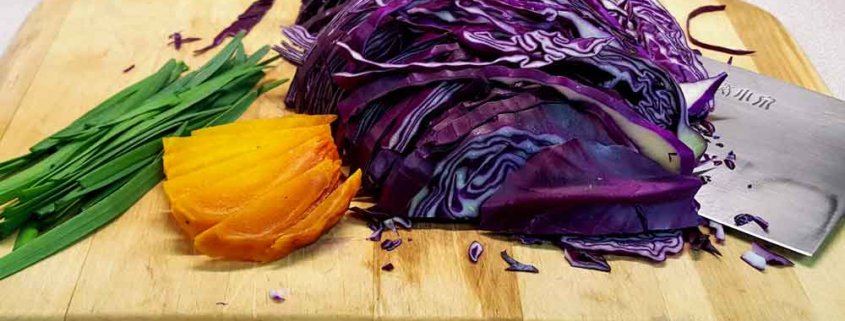 © 2024 Terroir Seeds | Underwood Gardens
© 2024 Terroir Seeds | Underwood Gardens

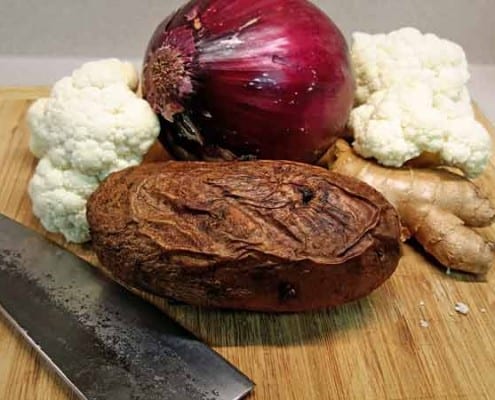
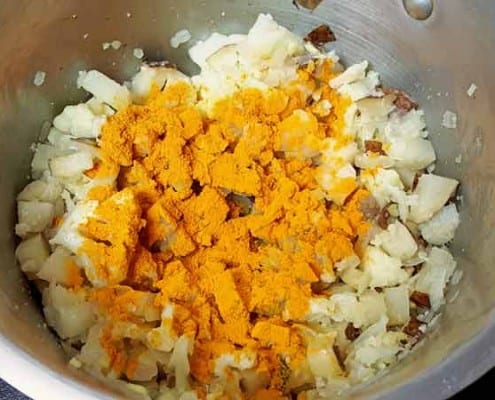
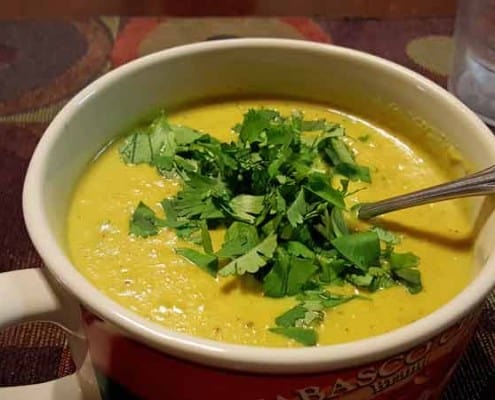
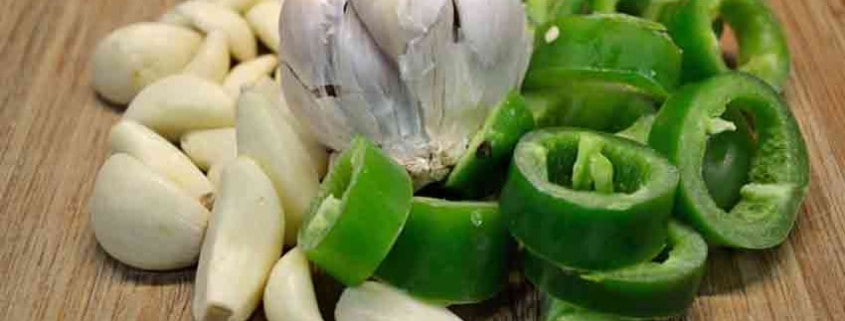



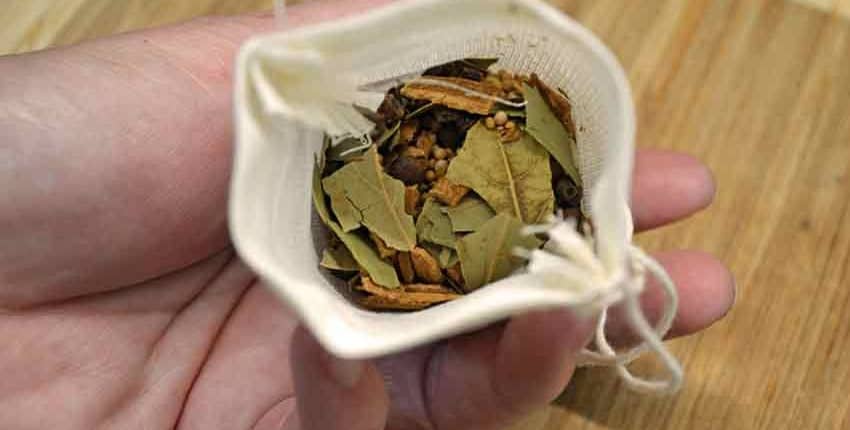

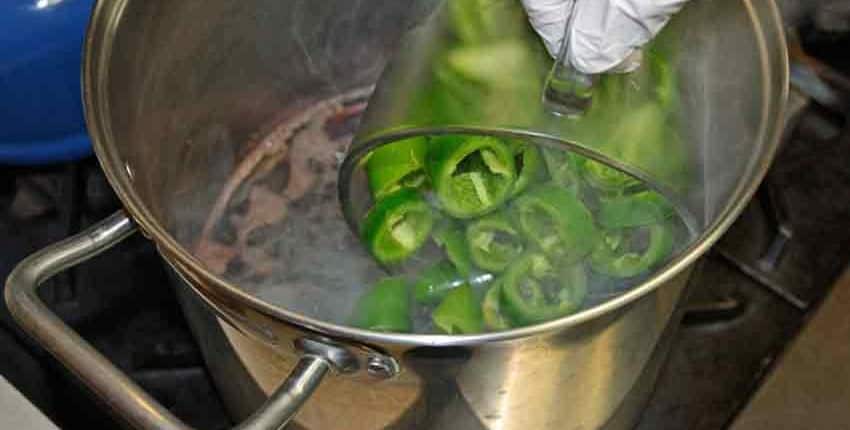
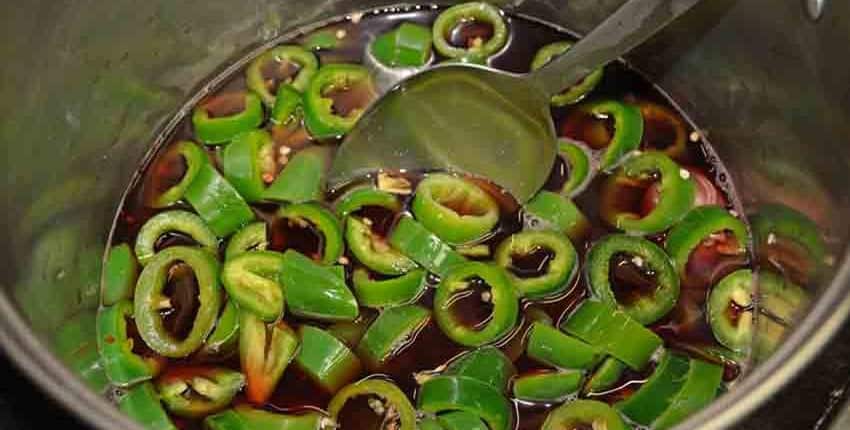
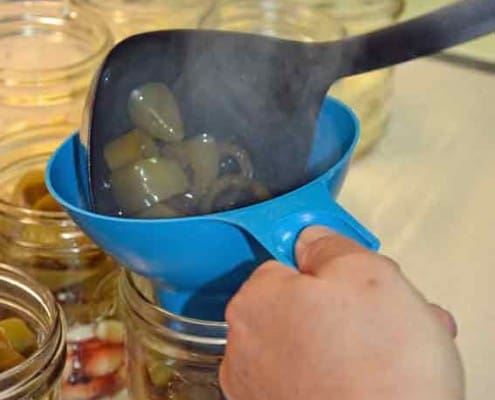

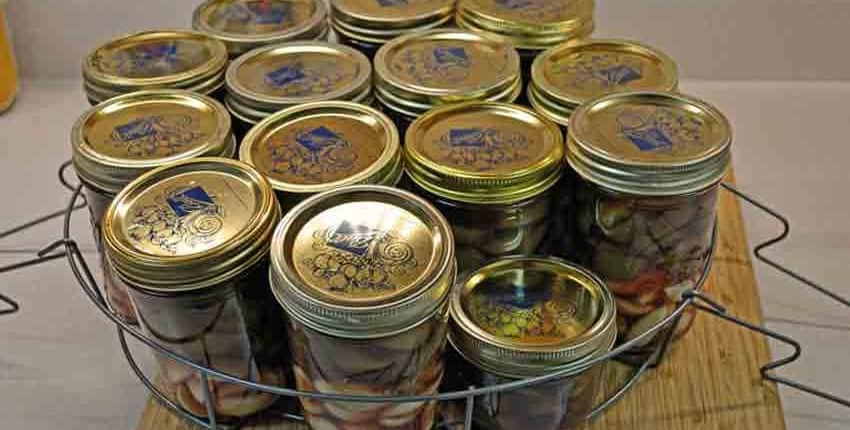

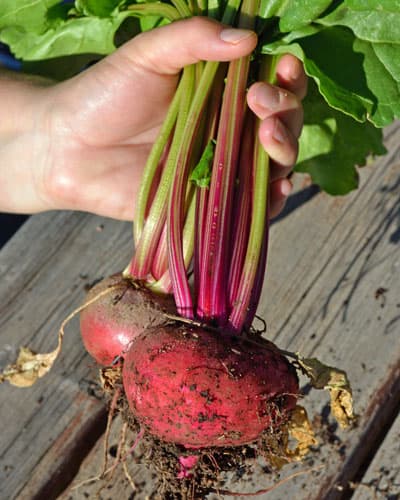
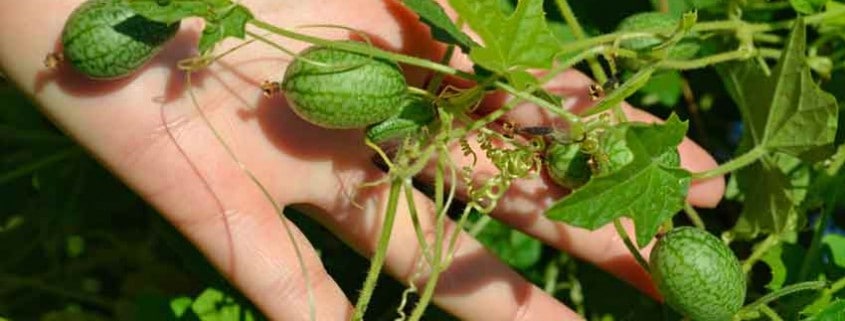

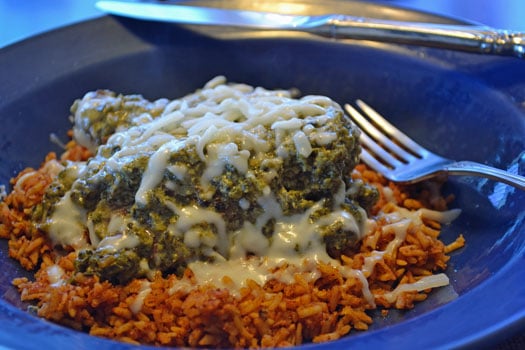


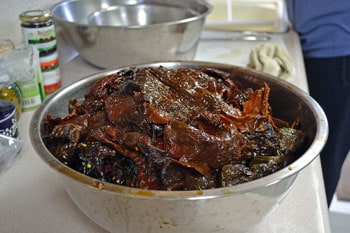










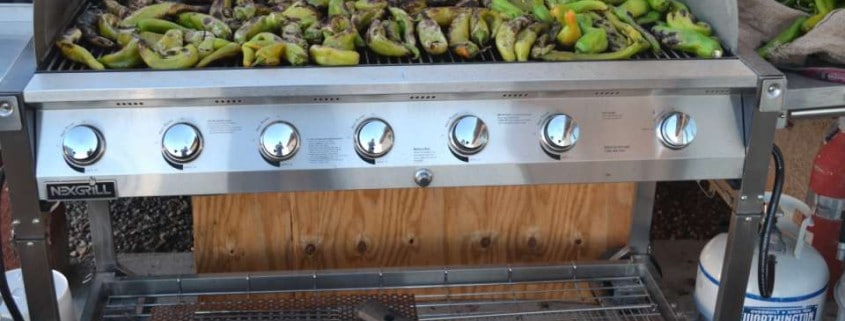
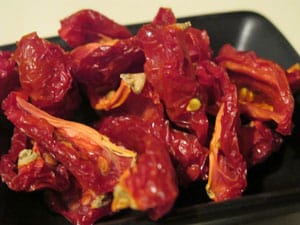
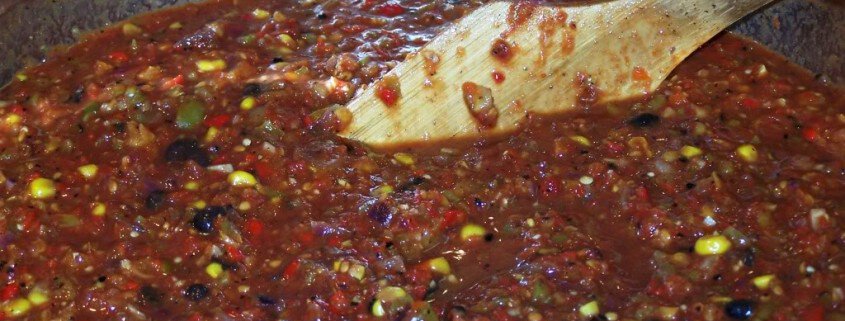
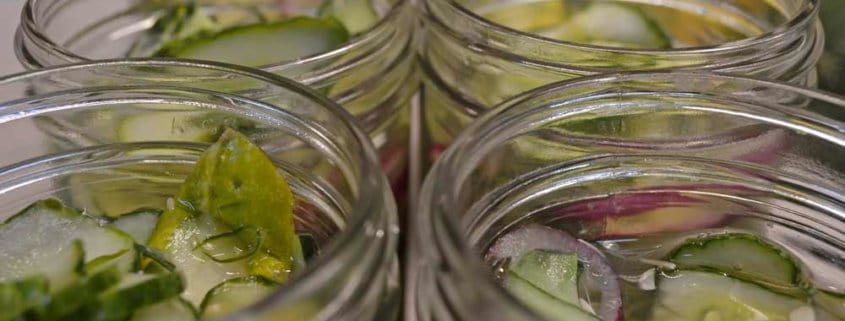 2018 Terroir Seeds | Underwood Gardens
2018 Terroir Seeds | Underwood Gardens